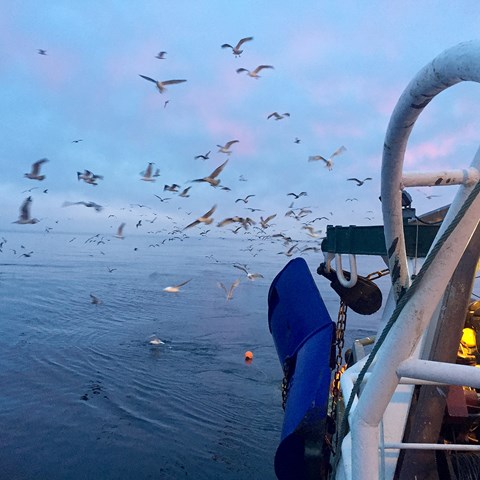"To undertake targeted fishing for flatfish species such as plaice and witch
flounder while the quota of cod is limited is a challenge. By using a horisontally divided trawlwith two sorting grids, the flatfish is caught in the lower codend and round fish like cod in the upper codend. If quotas for any of the species would run out, you simply open one codend and continue fishing with the other", says Hans Nilsson, project manager in the Secretariat for Selective Fishing and researcher at the Department of Aquatic Resources at SLU, Swedish University of Agricultural Sciences.
The specially developed trawl is one of several examples of successful gear
development from the Swedish Secretariat for Selective Fisheries. The
secretariat was launched in 2014 on behalf of the The Swedish Agency for Marine and Water Management, SwAM. The secretariat collects ideas for gear development directly from the fishing industry, and together, researchers and fishermen prepare a project plan. A steering group including SvAM and the Swedish Board of Agriculture, decides on priorities and funding, and the projects granted receive funding from SwAM. The fishers develop the gear on their own, and gear are then scientifically evaluated by researchers at SLU Aqua.
"The fishers initiative and commitment are crucial to the successful work
of the secretariat. It ensures that the projects are relevant and therefore the gear are also likely to be directly applicable in practical fishing, "says
Daniel Valentinsson, researcher at SLU Aqua.
The background to the secretariat is a government mandate that gave SvAM the task of coordinating the work on selective fishing in order to facilitate for the fishing industry when introducing the new EU landing
obligation. The landing obligation means that catches of quota species can no longer be thrown back into the sea and all catches are counted against quotas.
During the Secretariat´s four years, SvAM has distributed 38 million kronor on projects aiming to lower the amounts of unwanted fish that are caught.
"Thanks to the secretariat, we have provided several useful gears for
everything from cod, herring and witch flounder to Norway lobster and Northern shrimp. However, the landing obligation is still not fully implemented in the Baltic Sea or the North Sea, so the fishing industry has probably not yet identified all the needs. When the landing obligation is fully completed, we will certainly see more individual solutions, says Daniel Valentinsson.
The experiences and good examples from the secretariat's work will be presented in an exhibition at the Ocean Conference in New York on June 5-9, this year. Sweden and Fiji are the initiator and chairman of the the high-level United Nations Conference to support the implementation
of Sustainable Development Goal 14: Conserve and sustainably use the oceans, seas and marine resources for sustainable development.
